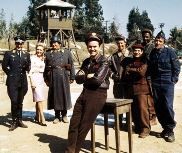
A look at a favorite TV show from my mis-spent youth – with an amazing back-story, especially as it relates to the Holocaust – after the jump ….
From 1965 to 1971, CBS ran a farce sitcom based on the notion of a WW-II prisoner of war camp run by the Nazis that – in actuality – served as an Allied base of covert intelligence and maneuvers … the lunatics-running-the-asylum, writ large. Hogan’s Heroes was in the Top Twenty television ratings for its first two seasons and ran for 168 episodes. For those unfamiliar with the show (which runs weekdays on TV Land at noon Eastern), Wikipedia has as comprehensive a summary as can be. What I’ll try to do is take a look at the back-story, and also have a look at some of the main characters (both before and after the series) including the fate of one of the show’s stars.

With its debut only twenty years following the end of WW-II: the show garnered criticism (in addition to its high ratings) from those who felt the show was tasteless. Some cited the depiction of a cozy prisoner-of-war camp, others the notion of seeing German soldiers in a loveable (if buffoonish) light and still others cited the Holocaust in their belief that no humor should emanate from this period. Those thoughts still exist today; as some Worst TV show lists include this program.
On the flip side, others are more exacting in their opinions of what crosses a line. Mel Brooks (just a few years later) pushed the envelope much further when he directed The Producers – which, although today considered “a classic” (and which years later spawned a hit Broadway play) did not do well at the box office. Brooks told the German newspaper Der Spiegel that “with comedy, we can rob Hitler of his posthumous power” while noting that he did not care for the Roberto Benigni film “Life Is Beautiful” (because it was set in a concentration camp).
Hogan’s Heroes, by contrast, was set in an Allied prisoner-of-war camp … certainly real ones would not have resembled Stalag 13 …. but one never saw any violence, a concentration camp or anything quite so sordid. What is not widely known is that the two creators of Hogan’s Heroes and several members of its cast were Jewish (and often those who had escaped the Holocaust) – here is some of the back-story.
The show’s two creators were Bernard Fein – (photo left, below) who appeared as an actor on “Sgt. Bilko” as well as other guest spots and who died in 1980 at the age of 53 – and the Canadian-born Albert Ruddy – (photo right) who later went on to produce two Best Picture-winning films, “The Godfather” and “Million Dollar Baby” and is still alive (and active) at age 84.
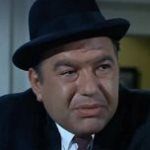
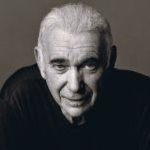
In the early 1960’s, they pitched a script that had the prisoners running an ordinary American prison … but no one would buy a script showing hardened criminals outwitting dumb prison guards (least of all, sponsors). Then, they learned of a TV pilot being offered called Campo 44 – based on an Italian prisoner-of-war camp – and quickly re-wrote their own script to be set in a German POW camp. They named the camp Stalag 13 (for bad luck) based upon the dramatic film Stalag 17 and pitched it to NBC.
That network turned it down because …. the pilot was “too good” (and thus unsustainable, in their eyes). They prevailed upon CBS head William Paley (who initially rejected it due to concerns about bad taste) after Fein and Ruddy acted-out many scenes, and the show became a hit after its September, 1965 debut.
To this day, several of the tag-lines from the show still are quoted (as will be noted along-the-way). One interesting note: the scenes at Stalag 13 are always set in the wintertime …. you never see any summertime sunshine. Another is that the episodes were not serialized, could run in any order: so the producers and the network decided later which finished episode would make the strongest season premiere, and would slot the rest according to largely practical reasons. That’s one reason why it has endured in re-runs; the episodes can all stand on their own.
The show came to an end in 1971 as CBS was in the process of changing its image, canceling its “cornier” programs and replacing them with more sophisticated fare (in an effort to become a “Tiffany” network). Other cancellations during this era included “Green Acres”, “The Beverly Hillbillies”, “Mayberry RFD”, “Hee-Haw”, “Lassie”, “Petticoat Junction” and “The Jim Nabors Hour” plus variety shows such as “The Jackie Gleason Show”, “The Ed Sullivan Show” and “The Red Skelton Show”. CBS did go on to debut “The Mary Tyler Moore Show”, “All In The Family”, “The Bob Newhart Show” along with “M*A*S*H” – so this represented a major change in TV viewing.
Before we take a look at the principal actors: in its final season, Hogan’s Heroes aired on Sunday nights, which was an early warning sign according to Howard Caine (who played Major Hochstetter), who thought he saw the writing on the wall that last year:
“They put us on opposite the first half hour of The Wonderful World Of Disney. Now, we were extremely popular with the kids, young people. And that’s where they placed us to kill us. And we knew it.”
Cast in the lead Allied prisoner role as US Army Air Forces Colonel Robert Hogan (senior ranking POW officer) was Bob Crane – who came to acting later in life, as he was a disc jockey and radio host before turning to acting. His time after the show has been discussed often, to which we will return later.
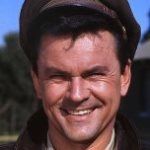

Second in command was US Army Air Forces Staff Sergeant James “Kinch” Kinchloe – portrayed by Ivan Dixon – primarily responsible for radio, telephone, and other forms of electronic communications. In 1965, casting an African-American actor in such a role was unusual (as the US Army had been segregated during WW-II).
Dixon had a noted career before/after the show; having experience on the Broadway stage in A Raisin in the Sun (which he reprised in the film version) and as the lead in the 1964 film Nothing But a Man (starring alongside Abbey Lincoln, who also had a standout jazz singing career).
Ivan Dixon left the show before its final season, seeking to escape the limits of the prison camp, and he became more involved as a TV director (“The Waltons”, “The Rockford Files”, “The Bionic Woman”, “Magnum, P.I.”, and “The A-Team”) as well as being a radio station owner. Ivan Dixon died in March, 2008 at the age of 76. (His replacement for the final year of Hogan’s Heroes was a Sgt. Baker, portrayed by Kenneth Washington who is still alive at age 68).
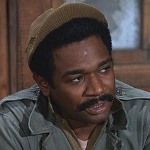

Always seen in the Allies’ laboratory was US Army Air Corps Technical Sergeant Andrew Carter – portrayed by Larry Hovis – who is in charge of ordnance and bomb-making (though he always seems on the edge of a lab explosion, due to his dull-wittedness). Larry Hovis began as a singer, later dabbling in stage and stand-up comedy. He was discovered by Andy Griffith’s manager, and had recurring roles in “Gomer Pyle” and “The Andy Griffith Show”. After “Hogan’s Heroes”, he acted in a touring production of “The Best Little Whorehouse in Texas” before becoming a TV game show producer (“The Liars’ Club“, “Yahtzee”) and later teaching drama at Texas State University-San Marcos. Larry Hovis died in September, 2003 at the age of 67.
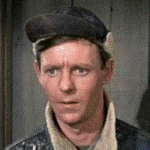
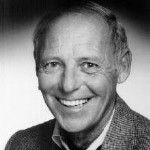
At the camp, Royal Air Force Corporal Peter Newkirk is the group’s conman, magician, pick-pocket, card sharp, forger, bookie, tailor, lock picker, and safe cracker. He was portrayed by Richard Dawson – easily the cast member with the most notoriety after Hogan’s Heroes. Born as Colin Emm in south-central England, he had a successful career in British comedy (and was married to the actress Diana Dors for several years). He eventually relocated to Hollywood and had a number of recurring roles on sitcoms. After Hogan’s Heroes he joined the cast for the final two seasons of “Rowan & Martin’s Laugh-In”, then became a regular on game shows (and “The Match Game” was the ideal forum for his ad-libs).
As the first host in 1976 of Family Feud – he helped create a hit show that (with frequent stumbles, cancellations and changes of host) still exists to this day. Richard Dawson died in June, 2012 at the age of 79.
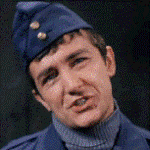
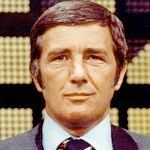
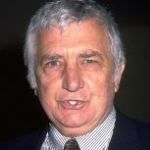
Apart from the (aforementioned) one-season actor Kenneth Washington: the only major character still alive from the show is Robert Clary – who portrayed Free French Air Force Corporal Louis LeBeau, a master-chef whose cooking skills often pry valuable information from Sgt. Schultz.
Born as Robert Widerman in Paris, he was liberated from the Buchenwald concentration camp in 1945 and resumed a singing career he began before the war. He relocated to the US at the beginning of the 1950’s and found work (often portraying Frenchmen) on TV and Broadway plays, marrying the daughter of Eddie Cantor. After Hogan’s Heroes he made appearances on “Days of our Lives” and “The Young and the Restless” and other TV shows, toured the US and Canada to talk about the Holocaust and made appearances at Hogan’s Heroes fan gatherings. At age 88 today, he released From the Holocaust to Hogan’s Heroes: The Autobiography of Robert Clary in 2001.
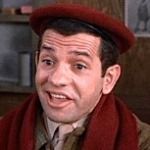
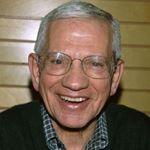
Cast as the bumbling head of Stalag 13 (complete with monocle) was Colonel Wilhelm Klink, portrayed by Werner Klemperer – who was always being threatened with losing his command …. but for that “perfect escape record”, which his (supposedly) bright superiors had no clue was a figment. Klink tries to portray himself as a tough guy, asking “Hogan, what is the meaning of this?!?!?” and threatening inmates with “Three days in the cooler!” (solitary confinement) for non-compliance … but everyone knows better. Klemperer had, in fact, accepted the role of Klink only on the condition he never came out as a winner at the end of an episode.
Werner Klemperer was born in North Rhine-Westphalia, Germany: the son of renowned conductor Otto Klemperer (who wrote a stirring book entitled I Will Bear Witness) that detailed the rise of the Nazi Party, to the point where Otto Klemperer moved his family to the United States in 1935 to escape persecution.
Werner Klemperer joined the Army’s Special Services unit, spending the next years touring the Pacific entertaining the troops. Afterwards, he worked on Broadway and some early TV roles before landing notable parts in film (including several with Alfred Hitchcock). Several years ago I watched the Stanley Kramer film Judgement at Nuremburg – and it took me a while to accept Klemperer in such a serious Nazi role (I was half-expecting him to burst out with “Dis-missed!” or another old tag line).
Klemperer was nominated for six Prime Time Emmys (and won two) for his portrayal of Klink, and after the show went on to roles on Broadway and television. He also followed his father’s musical path and accepted roles in light operas, plus as a narrator (or violinist) in orchestral works. He served as an officer of Actors’ Equity Association and appeared on Bill Maher’s old “Politically Incorrect” show. Werner Klemperer died in December, 2000 at the age of 80.
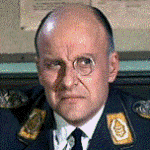
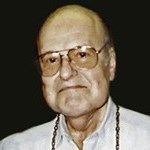
Perhaps the show’s best-remembered cast member was Master Sergeant Hans Schultz, as portrayed by John Banner – who was so bumbling and dimwitted as to be almost likeable. His constant fixation with food (saying that if he won the lottery, “I would have Wiener Schnitzel for breakfast, every day!”) made him easy for the Allied prisoners to bribe (with some Apfel Streudel, of course). And nearly fifty years after the show’s debut: you will read newspaper essays and OpEd pieces likening someone who averts their eyes (to something unpleasant) by referencing Sgt. Schultz’s “I know “NUTH-ing!”
Johan Banner was born in Vienna, Austria and studied acting. In 1938, when he was performing with an acting troupe in Switzerland, Adolf Hitler annexed Austria to Nazi Germany. Banner emigrated to the United States, where he enlisted in the US Army as a supply sergeant – so the rank of Sgt. Schultz had some meaning to him. His family members who remained behind perished in the Holocaust … and so serving to him was more than just a duty.
During the 1950’s-60’s, he played numerous character actor TV roles (on such shows as “Alfred Hitchcock Presents”, “Sky King”, “Perry Mason” and “The Man from U.N.C.L.E.”, as well as some roles in film and Broadway. He said that he once was a skinny fellow, but that his French-born wife’s cooking was so good, he grew to 260 lbs … which helped him garner the role as Schultz.
After Hogan’s Heroes, he acted briefly before retiring from acting and moving back to Europe with his wife. On a 1973 visit to his hometown of Vienna, John Banner died suddenly from an abdominal hemorrhage on his 63rd birthday, and is buried there.
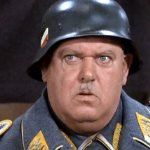
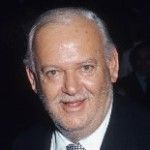
Finally, a look at the two men who kept Colonel Klink in mortal peril of losing his cushy job. General Albert Burkhalter – as portrayed by Leon Askin – was a dour-faced man who couldn’t understand how Colonel Klink had a “perfect escape record” and Leon Askin once wrote:
“After I had become well-known through the TV series Hogan’s Heroes, Beverly Hills school children would call after me “Klink, Klink!” Even my frequent threats – “I send you to the Russian front!” – had no effect on Klink.
Leon Aschkenasy was born into a Jewish family in Austria, who after a career on-stage (and a brief stint in an internment camp) was able to emigrate to the US in 1940 (although his parents both died in the Holocaust). His accent meant that (often) acting roles involved a good deal of typecasting, yet was still able to obtain parts in Shakespeare revivals. Between 1977 and 1979, he appeared in Steve Allen’s PBS series Meeting of Minds portraying Martin Luther and Karl Marx. He portrayed a psychology professor in a season-six episode of “Happy Days” and had a brief appearance as a Moscow anchorman in the film “Airplane II: The Sequel”. He later returned to Vienna (still acting) in 1994 and Leon Askin died there in June, 2005 at the age of 97. Two years later, Leon Askin Square was named after him.
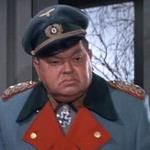
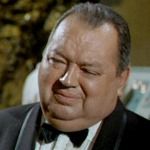
Lastly, Major Wolfgang Hochstetter of the Gestapo – as portrayed by Howard Caine – is an ardent Nazi who never understands why Hogan is constantly allowed to barge into Klink’s office at will, saying “What is this man doing here?!” along with his catchphrase “Heads will roll!” … yet Burkhalter (as an Army officer, vs. a Nazi Party official) dislikes Hochstetter just as much as Klink does, and so he comes off more as a paper tiger.
Howard Caine was born Howard Cohen in Nashville, worked to lose his Southern accent (eventually mastering 32 foreign and American dialects) and was an honors graduate of Columbia University drama school. He had a career on Broadway (“Inherit the Wind” and succeeding Ray Walston in the original “Damn Yankees” production) and appeared on numerous TV series and films as a character actor.
One surprising note: his Southern heritage led him to an early appreciation of the banjo – and who took first place in 29 old time banjo competitions, right up until his death in late 1993 at the age of 67.
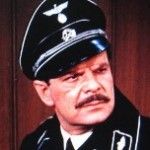
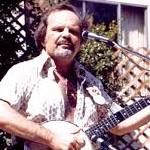
After the end of Hogan’s Heroes, Bob Crane was often typecast and had trouble obtaining roles (other than dinner and regional theater). He did have a record as an active womanizer, and frequently would videotape his sexual encounters … helped in that regard by a friend named John Carpenter (who worked for Sony as a video equipment salesman). At some point, their relationship began to fall-out – speculation was that Crane was tiring of that life (and seeking a reconciliation with his ex-wife) – and in June 1978 Bob Crane was found dead at the age of 49, with the cause of death ruled trauma from a blunt instrument (which investigators believe was a camera tripod).
Police suspected John Carpenter from the start, but due to the lack of DNA evidence at the time, the DA refused to press charges. This changed in 1990, when investigators re-opened the case and Carpenter went on trial in 1994. The jury acquitted him, citing a lack of evidence (and the DNA samples had atrophied since). Carpenter died four years later and the case is still officially listed as unsolved (which was the focus of the 2002 film Auto Focus starring Greg Kinnear).
Through the years, many speculated why there was never a feature film made about Hogan’s Heroes as it still appears on TV Land (as already noted) and has a ready-made audience. The answer is that there was a long tug-of-war between the Fein-Ruddy creators and the successors to Bing Crosby Productions (who produced the series) … until last year, when a court held that Fein-Ruddy held the rights, and while there was some litigation over that decision ……. it appears that just last week a settlement was reached. And so – nearly fifty years after its debut – we may well see Hogan’s Heroes come to a big screen near you in the not-too-distant future.
Let’s close-out with …… well, what else? – the show’s opening theme song!
3 comments